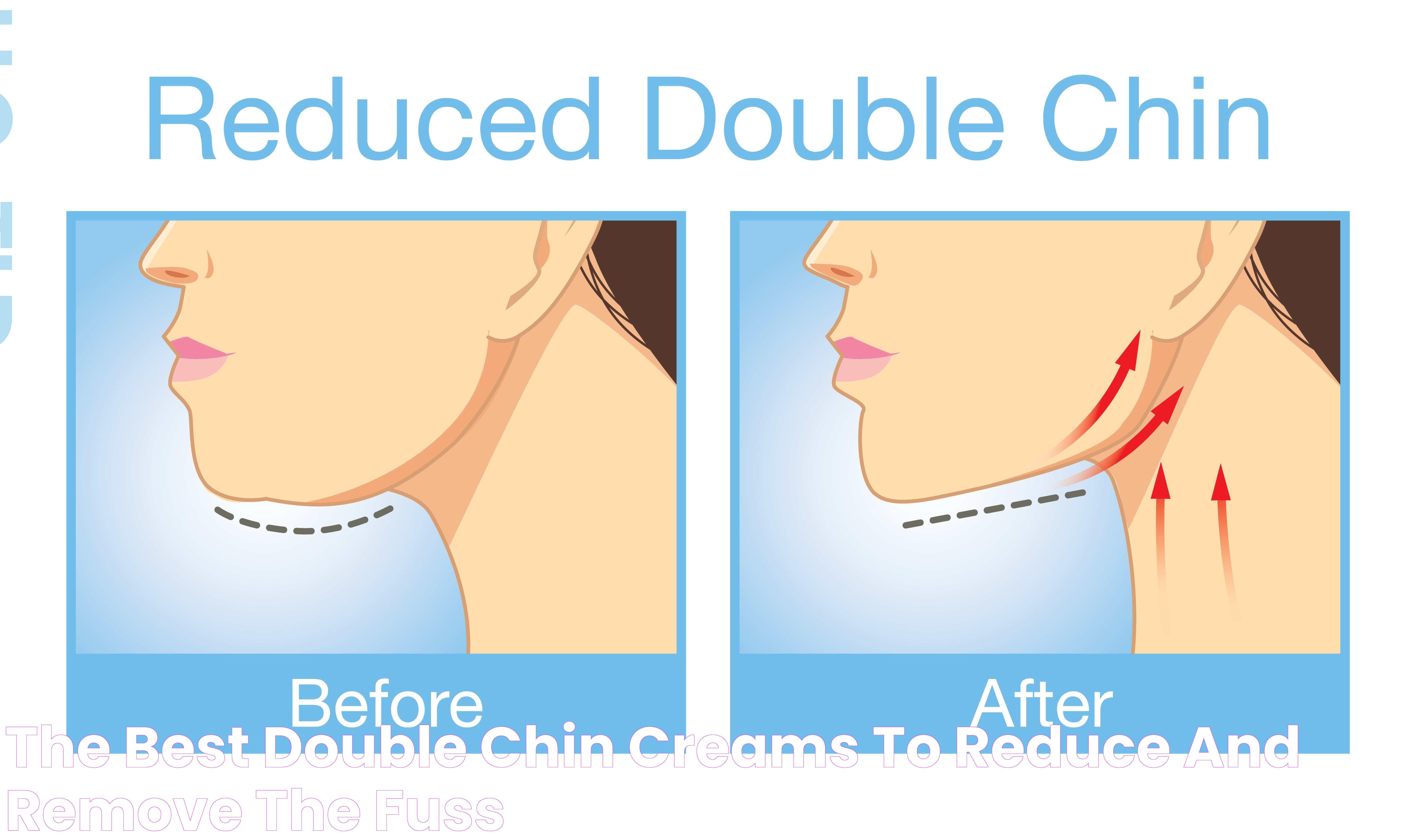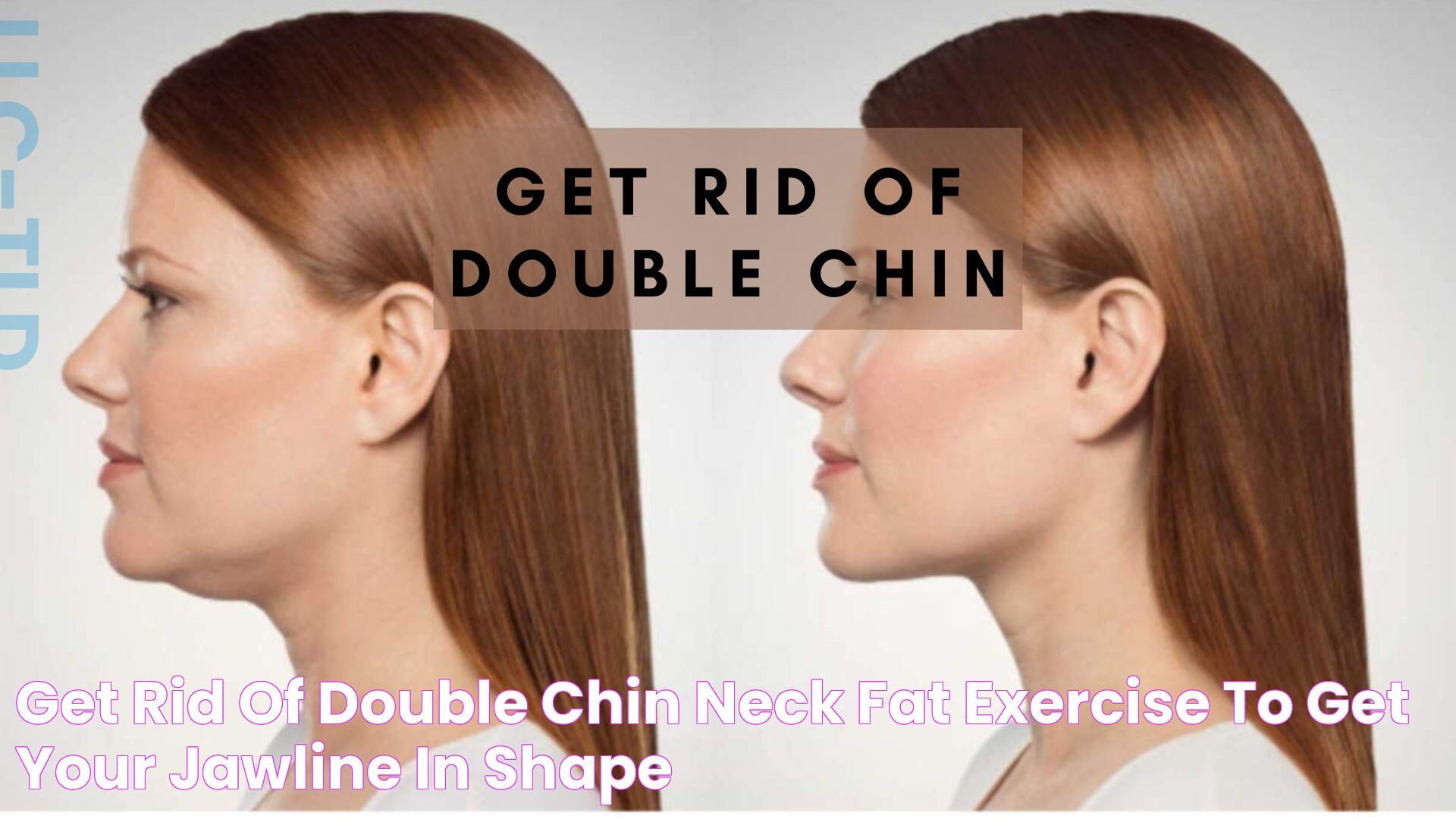Are you tired of looking in the mirror and seeing that pesky double chin staring back at you? You're not alone, as many people struggle with this common concern. A double chin, also known as submental fat, is the extra layer of fat that forms beneath the chin, often leading to feelings of self-consciousness. While genetics, aging, and weight gain are key contributors, there are effective methods to get rid of a double chin and achieve a more defined jawline.
Fortunately, with the right approach, it's possible to reduce or even eliminate a double chin. From lifestyle changes and exercises to non-invasive treatments and surgical options, there are various solutions available to suit different preferences and needs. This guide will provide you with a comprehensive overview of the techniques that can help you achieve your desired look.
In this detailed article, we'll explore the causes of a double chin and delve into both natural and medical methods for reducing it. Additionally, we'll address frequently asked questions and provide expert insights to help you make informed decisions. Whether you're looking for a quick fix or a long-term strategy, you're sure to find valuable information here to help you get rid of that double chin once and for all.
Read also:Enhancing Your Appearance With Eyelid Lift The Ultimate Guide
Table of Contents
- What Causes a Double Chin?
- Can Exercise Help Reduce a Double Chin?
- How to Incorporate Diet Changes?
- Are There Effective Home Remedies?
- What Are the Non-Invasive Treatment Options?
- Surgical Methods for Double Chin Removal
- How to Maintain Results?
- Is Genetics a Factor?
- Can Aging Contribute to a Double Chin?
- Frequently Asked Questions
- Conclusion
What Causes a Double Chin?
Understanding the underlying causes of a double chin is the first step in addressing the issue. Several factors can contribute to the development of submental fat:
- Genetics: Some people are genetically predisposed to store fat in the chin area.
- Weight Gain: Excess calorie intake can lead to fat accumulation, including under the chin.
- Aging: As we age, the skin loses elasticity, and muscles weaken, leading to sagging skin.
- Posture: Poor posture can weaken neck and chin muscles, contributing to a double chin.
By identifying the specific cause of your double chin, you can tailor your approach to address it effectively.
Can Exercise Help Reduce a Double Chin?
Targeted exercises can be an effective way to tone the muscles around the chin and neck area, potentially reducing the appearance of a double chin. Here are some popular exercises:
- Chin Lifts: Tilt your head back and look towards the ceiling. Pucker your lips as if you're kissing the ceiling and hold for a few seconds. Repeat 10-15 times.
- Neck Rolls: Gently roll your head in a circular motion, stretching your neck muscles. Perform both clockwise and counterclockwise rolls.
- Jaw Jut: Tilt your head back, look at the ceiling, and push your lower jaw forward. Hold for a few seconds and release. Repeat several times.
Consistency is key, so incorporate these exercises into your daily routine for the best results.
How to Incorporate Diet Changes?
Diet plays a crucial role in fat reduction, including in the area under the chin. Consider the following dietary changes:
- Reduce Caloric Intake: Consuming fewer calories than you burn can lead to weight loss, which may reduce a double chin.
- Eat More Vegetables and Fruits: These foods are low in calories and high in nutrients, helping you maintain a healthy weight.
- Stay Hydrated: Drinking plenty of water keeps the skin healthy and may help reduce bloating.
- Limit Sugar and Processed Foods: These can contribute to weight gain and inflammation.
By adopting a balanced diet, you can support your efforts to get rid of a double chin.
Read also:Why Does Hair Turn Grey Causes Prevention And More
Are There Effective Home Remedies?
While home remedies may not provide drastic changes, they can complement other methods to reduce a double chin. Some popular remedies include:
- Green Tea: Rich in antioxidants, green tea can boost metabolism and aid in fat loss.
- Egg White Masks: Applying a mask made of egg whites, honey, and lemon juice may help tighten the skin.
- Cocoa Butter Massage: Massaging cocoa butter into the skin may improve elasticity.
These remedies can be part of a holistic approach, but results may vary between individuals.
What Are the Non-Invasive Treatment Options?
If you prefer medical solutions, several non-invasive treatments are available:
- Kybella Injections: An FDA-approved injectable treatment that dissolves fat cells in the chin area.
- CoolSculpting: A procedure that uses controlled cooling to freeze and eliminate fat cells.
- Ultrasound Therapy: Utilizes ultrasound waves to stimulate collagen production and tighten skin.
These treatments offer noticeable results without the need for surgery, but it's essential to consult with a professional to determine the best option for you.
Surgical Methods for Double Chin Removal
For those seeking more immediate and dramatic results, surgical methods may be considered. Options include:
- Liposuction: A procedure that removes fat through suction, providing a more defined contour.
- Facelift: A surgical procedure that tightens and lifts the skin to eliminate sagging.
- Neck Lift: Focuses on the neck area, tightening muscles and removing excess skin.
Surgery is typically more invasive and requires a recovery period, but it can deliver lasting results.
How to Maintain Results?
Once you've achieved your desired look, maintaining the results is crucial to prevent the return of a double chin:
- Stay Active: Regular physical activity helps maintain a healthy weight.
- Monitor Your Diet: Continue to make conscious food choices to prevent weight gain.
- Practice Good Posture: Keeping your neck and chin aligned can prevent muscle weakening.
Consistency in these habits will help you enjoy your results for the long term.
Is Genetics a Factor?
Genetics can significantly impact the distribution of fat in your body, including under the chin. If a double chin runs in your family, you may be more prone to developing one, regardless of your overall weight. Understanding your genetic predisposition can help you tailor your approach to managing a double chin effectively.
Can Aging Contribute to a Double Chin?
Aging is a natural process that affects all areas of the body, including the skin's firmness and elasticity. As the skin loses its youthful resilience, it can start to sag, leading to the appearance of a double chin. Additionally, muscle tone decreases with age, which can exacerbate the issue. While aging cannot be stopped, adopting a healthy lifestyle and using targeted treatments can help mitigate its effects.
Frequently Asked Questions
1. Can sleeping position affect a double chin?
Yes, sleeping on your back with your head slightly elevated can help prevent fluid retention and reduce the appearance of a double chin.
2. Are there any risks associated with surgical procedures?
As with any surgery, there are risks, including infection, scarring, and nerve damage. It's essential to discuss these risks with a qualified surgeon before proceeding.
3. How long do non-invasive treatments take to show results?
Results from non-invasive treatments like Kybella or CoolSculpting can take several weeks to months to become noticeable, as the body gradually eliminates the treated fat cells.
4. Can weight loss alone eliminate a double chin?
While weight loss can help reduce a double chin, it may not completely eliminate it, especially if genetics or aging are factors. Combining weight loss with targeted treatments may yield better results.
5. Is it possible to prevent a double chin?
While you can't completely prevent a double chin, maintaining a healthy weight, practicing good posture, and staying active can reduce your risk of developing one.
6. Do facial exercises guarantee results?
Facial exercises can help tone muscles, but results vary. Combining them with other methods may enhance effectiveness.
Conclusion
Getting rid of a double chin involves a multifaceted approach that combines lifestyle changes, exercises, and potentially medical treatments. By understanding the causes and exploring the various options available, you can make informed choices that align with your goals and preferences. Whether you opt for natural methods or seek professional treatments, consistency and dedication are key to achieving and maintaining a more defined jawline. Remember to consult with healthcare providers or specialists when considering medical or surgical options to ensure safety and effectiveness.
For more information on the latest trends and treatments for double chin reduction, you can visit the American Academy of Dermatology's website.

